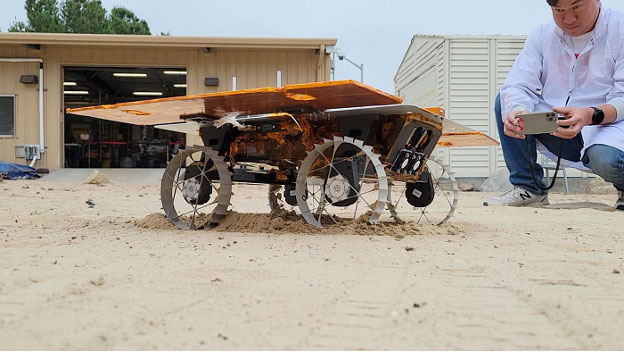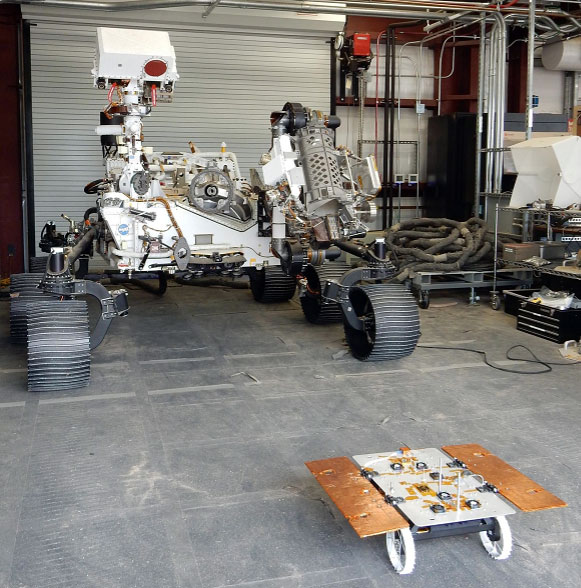News

Distributed Mini-Moon Rovers
To test the effectiveness of distributed automated robotic systems on the surface of the Moon, NASA’s JPL has developed three rovers to map the Moon’s interior in 3D with ground-penetrating radar. The Cooperative Autonomous Distributed Robotic Exploration (CADRE) project will be a part of the 2024 Commercial Lunar Payload Services (CLPS) Program, with each of the three four-wheeled rovers operating autonomously as a node in a network that will work for 14 days (the length of a lunar day) to map a part of the Reiner Gamma region.

The three four-wheeled CADRE rovers will autonomously explore the lunar surface, while working together in a distributed robotic network. Credit: NASA-JPL.
Motiv Space Systems, which has worked closely with JPL on a number of other robotic missions including the 2020 Perseverance Rover, has been a key player for more than two years in developing critical hardware elements that will enable the success of the CADRE mission. Motiv developed the base station deployer rover, motor controllers for mobility and subsystem deployments, thermal management systems, and the rover exoskeleton.
During the mission, each of the three rovers will be lowered to the lunar surface and will operate autonomously to position itself to charge its batteries before working with the other rovers, communicating through a base station, to map an area of the Moon. This sort of autonomous distributed operation will be important for future robotic exploration of the lunar surface, and could play a role in subsequent manned missions as a part of the Artemis Program.
Motiv has delivered all of its developed flight hardware to JPL, which has been subsequently integrated into the three flight rover systems. The rovers have been progressing though an environmental test campaign at JPL as the ultimately prepare for lander integration and flight in 2024.

The CADRE rover next to the 2020 Mars Perseverance Rover, for which Motiv Space Systems also played a role in developing key robotic components. Credit: NASA-JPL.
NASA has used robotic systems for exploration for decades. However, those systems have relied heavily on Earth-based human operators for tasking and control. The CADRE mission will demonstrate a distinct departure from this method of operation, with each of the rovers relying on its ability to work independently and through the distributed network to perform the mission goals. CADRE will demonstrate a next generation autonomy capability to be utilized for future multi-agent distributed systems.
Although human exploration of space will continue to capture the imagination of people on Earth, robotic systems will play an increasing role in enabling that exploration. Motiv Space Systems has worked closely with NASA and JPL in the development of robotic systems that expand the horizons of exploration. The suite of components developed by Motiv for the CADRE mission takes the next step in distributed autonomous robotic exploration for future Moon and Mars missions..